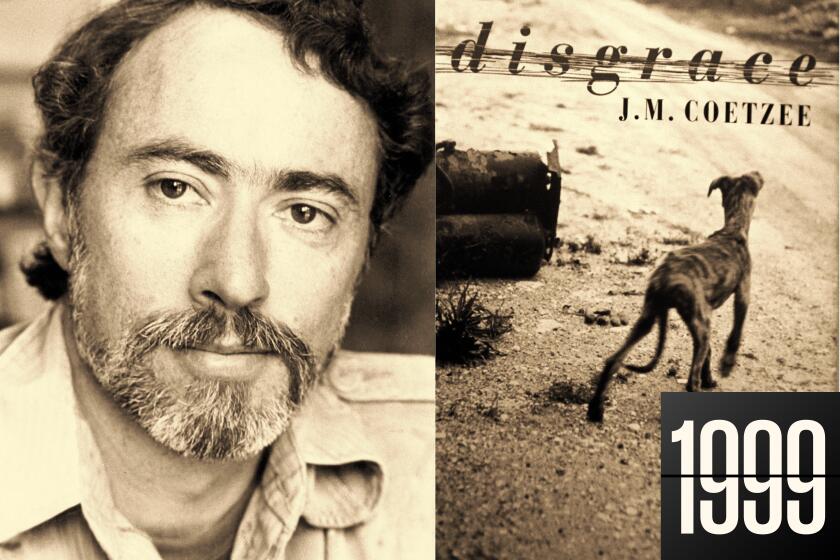Asian Radio Is a Hard Sell for Ads, Broadcasters Find
An independent Chinese-American programming company working for KAZN-AM had lobbied hard to get a Los Angeles nightclub to advertise on the radio station’s Chinese show. So the firm was stunned recently when a rival KAZN programmer persuaded the club to buy time on KAZN’s Korean segment instead.
“They were ready to sign up with us . . . but those Korean (American) salesmen are quite aggressive,” said William Parker, a station employee and head of the independent company that programs KAZN’s Chinese segment.
Bryan Byungwoo Kim, who heads the company that provides Korean programming on KAZN, said he did not recall the incident. But he admitted that there has been friction at the station among the various ethnic groups. He accused salesmen for KAZN’s Chinese show of encroaching on other sales territories because “they don’t have any big business in the Chinese community” to support their programming.
Selling a unified Asian-American market of consumers to advertisers has proved problematic for KAZN--the nation’s only all-Asian language station.
Since it went on the air in January, KAZN has tried to market six diverse Asian languages and cultures--Japanese, Korean, Thai, Filipino, Chinese and Vietnamese--to companies eager to reach the 2.7 million Asian-Americans living in Southern California.
Although the owners say the station is profitable, it has encountered resistance from some major advertisers, and neither station owners nor Arbitron Ratings Co. can provide estimates of how many listeners the station has. In addition, KAZN has experienced friction among its independent Asian-American producers. Meanwhile, there is concern among some experts that as Asians assimilate into U.S. society, they will lose the language skills and culture that define them as a unique market.
Affluent Groups
“This is a conceptual sell, not a marketing sell,” said Dwight Case, chief executive and co-founder of the 5,000-watt station in Pasadena. “One thing we know is that we are not going to have (big) ratings. We have to sell advertisers on the concept” of a unified Asian-American market.
Visions of such a market have long intrigued entrepreneurs interested in reaching what are some of the most affluent and highly educated ethnic groups in the United States.
In Southern California, 60% of all Japanese- and Korean-American households earn $30,000 or more, reported a study released in June by Los Angeles television station KSCI. And Filipino-Americans, though from a poor country, had the highest average annual income of all Asian ethnic groups in Los Angeles County, according to a United Way study of 1980 census data. Japanese-Americans placed second in the study.
By comparison, the U.S. Census Bureau estimated in 1987 that the national average annual household income for Latinos is $24,666 and $20,743 for blacks.
Asian-Americans are a “tremendously promising market but 90% of the major advertisers aren’t ready for them,” said David Chen, executive vice president of the Los Angeles advertising agency Muse Cordero Chen, Inc. “When (most) people refer to Asian people, they think of Buddhist temples and Confucian thought, but things are more complicated than that.”
Indeed, Case, 60, and KAZN co-founder George Fritzinger, spent nearly five years studying the market before they launched KAZN in January. The pair had been watching the economic development of fast-growing Pacific Rim countries such as Japan, South Korea and Taiwan and were convinced that mainstream advertisers were not catering to the burgeoning Asian-American population.
Rates Are Cheaper
To hedge their bets, however, the owners lease KAZN’s 19 hours of daily air time to independent programmers and sell commercial spots to advertisers. Prices for air time range from $250 to $1,000 an hour, depending on how much commercial time a programmer wants to sell.
A 60-second commercial at KAZN sells for $100 to $200, station officials said. By comparison, the average cost of a 60-second commercial at Southern California’s 200-odd radio stations is about $450, according to the Southern California Broadcasters Assn., a trade group.
The mix of music, news and information that KAZN broadcasts has proved to be a big hit with some advertisers, especially on the Korean and Japanese shows.
“We have more than 150 advertisers,” declared Kim, a former Seoul, South Korea, broadcaster who heads the 22-member production company that provides 10 hours of daily Korean language programming on KAZN. “This is a good business.”
Mayumi Shirai, president of Asahi Homecast, which produces Japanese language programming for KAZN, said there is already a waiting list of Japanese banks, brokerage firms, travel agencies and food companies trying to buy time on the two-hour show.
But for others at the station, broadcasting has not been so rosy.
Last month, for instance, Case canceled Dragon Broadcasting Co.’s two-hour Chinese language show after the company fell $20,000 in debt to the station. Dragon was unable to sell a sufficient number of ads on the show.
Case, who is searching for replacement Chinese programming, blames Dragon’s lack of experience in sales and marketing. But Parker, who heads the company and has worked as a broadcaster in Hong Kong and Tokyo, said even Case’s sales staff was unable to sell all the commercial slots for the show.
Some Have Faltered
Despite some advertiser resistance, a few large retailers such as May Co. and the Broadway department stores as well as Korean Airlines and the Los Angeles Police Department, among others, have bought commercial time on KAZN. And Case says there is even greater demand from smaller concerns such as beauty salons, restaurants, grocery stores and travel agencies, although he said he’s been disappointed that specialty food concerns and the telephone company have not been heavy advertisers, as he expected.
Over the years, several California-based publications and broadcast outlets have cropped up to serve Asian-Americans, including KSCI and Radio Pacific Japan in Gardena. But while KSCI, Channel 18, has had a measure of success serving Asian-Americans and several other ethnic groups, some media enterprises that have targeted the Asian-American community have faltered.
For instance, Rice magazine, a Los Angeles-based publication that targeted second- and third-generation Asian-American readers, folded this year, and broadcasters such as Radio Pacific Japan of KMAX-FM, report having financial difficulty because Asian companies seem comfortable with their existing advertising relationships and U.S. advertisers feel that they can reach Asian-Americans through mainstream publications.
“The radio business is a very difficult business because the audience (that speaks Japanese) is very small,” said Yoshioki Mizuno, president of Radio Pacific Japan. Mizuno, who spoke through an interpreter, estimates that only about 63,000 Japanese-Americans in Southern California tune into the one-hour evening show.
Fred McLaren, president of Hughes Market, which the KSCI survey found was the second most popular supermarket among Japanese-Americans in Southern California behind Vons, said the chain’s popularity among Japanese-Americans “is more a function of our location than anything else.” He said that while Hughes used to advertise some years ago on a Japanese-language television program it doesn’t any longer because the Japanese-American community in Los Angeles is made up of “mostly second- and third-generation” residents.
The decline in native language skills concerns many who target the Asian-American community. While the native language skills of some groups, such as Koreans and Filipinos, are replenished by the influx of many newcomers to the United States, acculturation has eroded the language skills of other groups.
KSCI’s study found that while 94% of Korean-Americans said they planned to teach their children to speak Korean, less than two-thirds of Japanese-Americans surveyed in Southern California indicated that they would teach their children to speak Japanese.
Despite the changing foreign language fluency of his audience, Case is optimistic over KAZN’s long-term outlook.
Case, who said he hopes to expand to round-the-clock broadcasting beginning in August, notes that Spanish broadcasters also initially encountered advertiser reluctance until they persuaded advertisers to ignore broadcast ratings and focus more on the overall demographic characteristics of the Latino market.
“Years ago, you couldn’t market a Spanish-language station either,” Case observed, “but look at where the Spanish market is now.”
More to Read
The biggest entertainment stories
Get our big stories about Hollywood, film, television, music, arts, culture and more right in your inbox as soon as they publish.
You may occasionally receive promotional content from the Los Angeles Times.






